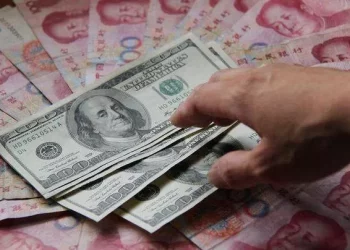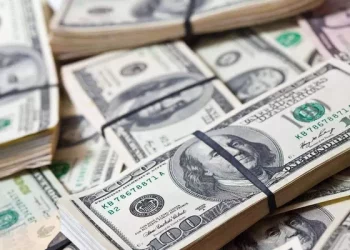In the world of foreign exchange (forex) trading, currency conversion is a fundamental concept that both seasoned traders and novice investors need to understand. Currency values fluctuate constantly, and determining the worth of one currency in terms of another is essential when conducting international trade, investment, or even personal transactions. A question that arises frequently among traders, investors, and individuals with global business interests is: How much is 1 million Australian dollars (AUD) in pounds (GBP)?
This article will explore the answer to this question in detail, offering insights into the mechanics of currency conversion, the factors that affect exchange rates, and how traders and investors can make informed decisions based on currency fluctuations. We’ll also look at the role of the Australian Dollar (AUD) and the British Pound (GBP) in the forex market, as well as discuss the impact of political, economic, and market conditions on currency exchange rates.
Understanding Currency Exchange Rates
Before we dive into the specific conversion of 1 million Australian dollars into pounds, it is important to understand the concept of currency exchange rates. Exchange rates represent the value of one currency relative to another. For example, if the exchange rate between the Australian Dollar (AUD) and the British Pound (GBP) is 0.50, this means that 1 AUD is worth 0.50 GBP. In this case, to convert AUD into GBP, you would multiply the amount in AUD by the exchange rate.
Exchange rates fluctuate constantly based on various factors, such as economic data, interest rates, geopolitical events, and market sentiment. These fluctuations are essential for forex traders who aim to capitalize on currency price movements to make a profit. For long-term investors, exchange rate trends provide valuable insight into the strength or weakness of a particular currency, helping them to make more informed investment decisions.
How to Convert 1 Million Australian Dollars into Pounds
To determine how much 1 million Australian dollars (AUD) is in pounds (GBP), we need to examine the current exchange rate between the two currencies. As of the time of writing, the exchange rate between the AUD and GBP can be found on forex platforms or financial news websites that track real-time currency market data. This rate changes constantly due to the factors we will discuss later in this article.
For example, if the exchange rate between the AUD and GBP is 0.50 (1 AUD = 0.50 GBP), the conversion would look like this:
1,000,000 AUD x 0.50 = 500,000 GBP
In this case, 1 million Australian dollars would be equivalent to 500,000 British pounds. However, it is important to note that exchange rates can vary, so it is crucial to check the latest rates before making any conversions.
The Role of Forex Markets in Currency Conversion
The foreign exchange market, or forex market, is the largest and most liquid financial market in the world, with daily trading volume exceeding $6 trillion. It is in this market that currencies are bought and sold, and where exchange rates are determined. Unlike other financial markets, such as stock markets, the forex market operates 24 hours a day, five days a week, due to the global nature of currency trading. This constant activity means that exchange rates are always fluctuating, which is why traders must be vigilant in monitoring currency pairs like AUD/GBP.
Forex trading takes place through currency pairs, with the exchange rate representing the value of one currency in terms of another. In the case of the Australian Dollar and the British Pound, the relevant currency pair is AUD/GBP. The first currency in the pair (AUD) is called the “base currency,” and the second currency (GBP) is called the “quote currency.” The exchange rate tells you how much of the quote currency (GBP) is needed to buy one unit of the base currency (AUD).
When considering the value of 1 million AUD in pounds, it is important to understand that the forex market is influenced by a variety of economic and geopolitical factors that can cause exchange rates to fluctuate. Traders use these fluctuations to their advantage by buying currencies when they are undervalued and selling them when they are overvalued.
Factors Affecting the Exchange Rate Between AUD and GBP
There are several key factors that can influence the exchange rate between the Australian Dollar and the British Pound. Some of the most important factors include:
1. Interest Rates
Interest rates set by central banks, such as the Reserve Bank of Australia (RBA) and the Bank of England (BoE), have a significant impact on currency exchange rates. Higher interest rates tend to attract foreign investment, which increases demand for the currency. When the RBA or BoE raises interest rates, it often leads to an appreciation of their respective currencies.
For example, if the RBA raises interest rates, the Australian Dollar may appreciate in value relative to the British Pound, causing the AUD/GBP exchange rate to increase. Conversely, if the BoE raises interest rates, the British Pound may strengthen against the Australian Dollar.
2. Economic Data and Growth
Economic indicators such as GDP growth, unemployment rates, inflation, and trade balances play a critical role in shaping currency values. Strong economic performance in Australia or the UK can lead to an increase in the value of the respective currency, while weaker economic conditions can cause a depreciation.
For example, if Australia’s economy is growing rapidly, investors may be more inclined to invest in Australian assets, increasing demand for the Australian Dollar and potentially raising the AUD/GBP exchange rate. Conversely, if the UK experiences economic slowdowns or recessions, the British Pound may weaken relative to the Australian Dollar.
3. Geopolitical Events
Political events, such as elections, changes in government policy, or geopolitical tensions, can lead to significant volatility in exchange rates. For example, the Brexit referendum, which took place in 2016, caused significant fluctuations in the value of the British Pound. Uncertainty about the future relationship between the UK and the European Union led to a sharp decline in the value of the Pound, and AUD/GBP exchange rates saw considerable shifts.
Similarly, developments in the Asia-Pacific region, including political instability or trade issues, can impact the value of the Australian Dollar.
4. Commodity Prices
Australia is a major exporter of commodities such as iron ore, coal, and natural gas. The value of the Australian Dollar is often influenced by the prices of these commodities. When commodity prices rise, the Australian economy tends to benefit, which can cause the Australian Dollar to appreciate. Conversely, when commodity prices fall, the Australian Dollar may weaken.
For example, if global demand for iron ore increases, the Australian Dollar may strengthen relative to the British Pound, leading to a rise in the AUD/GBP exchange rate. However, if commodity prices decline, the AUD may weaken, resulting in a lower AUD/GBP exchange rate.
5. Market Sentiment and Risk Appetite
The global forex market is influenced by investor sentiment and risk appetite. When investors are feeling optimistic about global growth, they may be more willing to take on riskier investments, which could include buying emerging market currencies or commodities. On the other hand, when there is market uncertainty or a global economic downturn, investors may seek safer assets such as the British Pound, which is often considered a “safe-haven” currency.
In times of market volatility, the Australian Dollar may experience greater fluctuations compared to the British Pound, leading to swings in the AUD/GBP exchange rate.
The Impact of Currency Conversion for Traders and Investors
For forex traders, understanding currency conversion is not only about converting one currency into another but also about anticipating future movements in exchange rates. Forex traders rely on technical and fundamental analysis to predict how currencies will move in the future, which allows them to capitalize on short-term price fluctuations. In this case, converting 1 million Australian dollars to pounds could become an opportunity for traders to take advantage of price movements in the AUD/GBP pair.
For investors who are dealing with international assets or businesses, currency conversion can significantly impact the profitability of investments. For example, if an Australian investor holds UK-based assets, fluctuations in the AUD/GBP exchange rate could impact the value of their investments when converted back into Australian dollars. Similarly, UK-based investors who hold Australian assets must consider how currency exchange rates will affect their portfolio returns when converted into British pounds.
Conclusion
Determining the value of 1 million Australian dollars in pounds requires understanding the exchange rate between the Australian Dollar (AUD) and the British Pound (GBP) at any given time. This exchange rate fluctuates based on a variety of factors, including interest rates, economic data, geopolitical events, commodity prices, and market sentiment. As a result, the value of 1 million AUD in GBP can change over time, and traders and investors must stay informed about currency movements to make sound financial decisions.
By staying aware of the forces driving currency exchange rates, investors and forex traders can navigate the complexities of the foreign exchange market, making decisions that align with their financial goals and risk tolerance. Whether for personal transactions, international trade, or investment purposes, understanding how much 1 million Australian dollars is in pounds is just the starting point in the broader world of currency conversion and forex trading.
Related Topics:


























